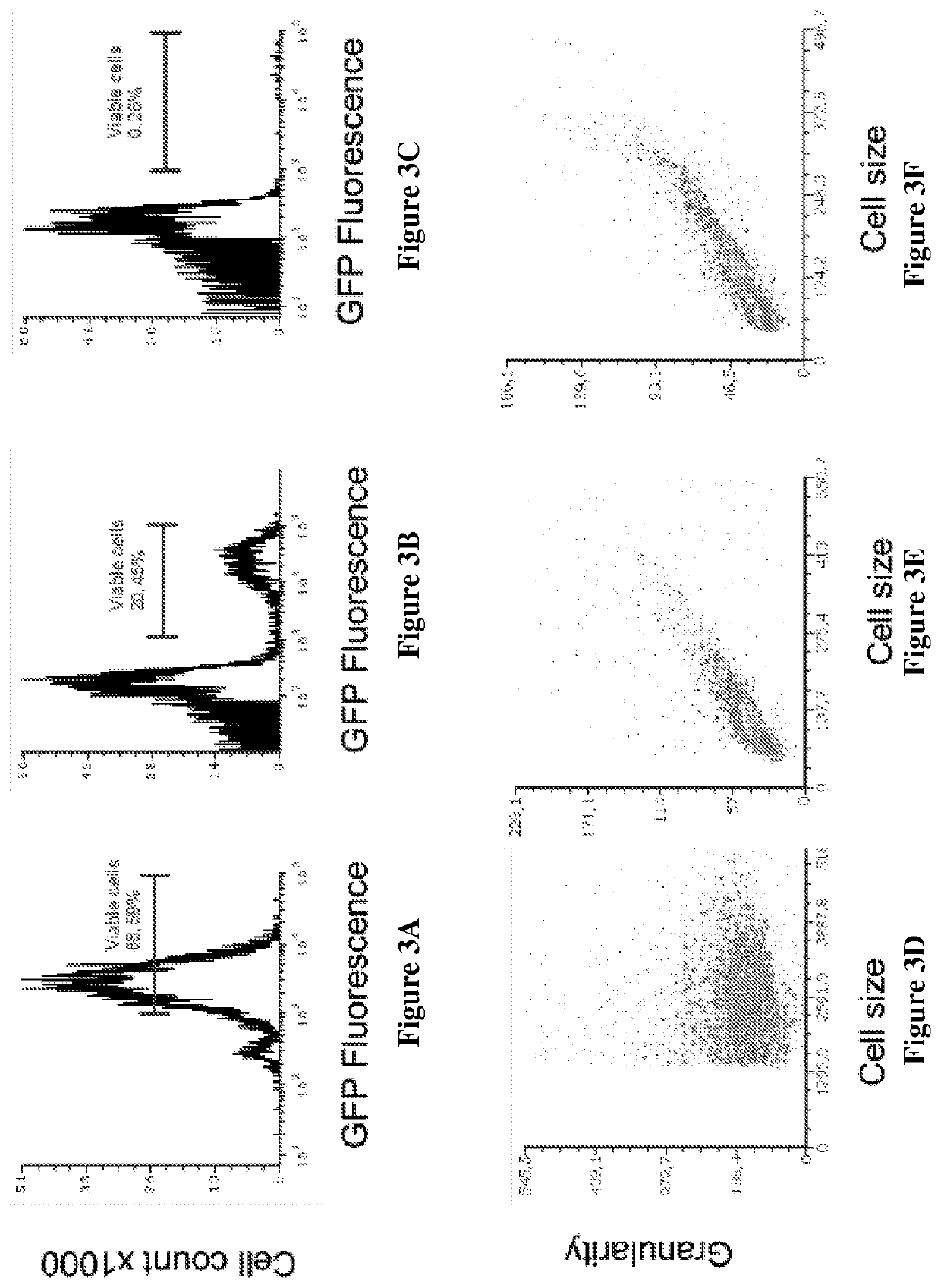Compositions comprising cannabinoids for use in the treatment of biofilm and conditions associated with microbial, fungal, bacterial infections
a technology of cannabinoids and biofilms, applied in the direction of antibacterial agents, chemical products, medical preparations, etc., can solve the problems of close community-acquired infections, drug-resistant bacteria are a leading cause of death, and the effect of infection mortality
- Summary
- Abstract
- Description
- Claims
- Application Information
AI Technical Summary
Benefits of technology
Problems solved by technology
Method used
Image
Examples
example 1
ilm Effect of Synthetic Cannabinoid HU210
[0080]FIG. 1 demonstrated pronounced dose-dependent inhibitory effect of HU210 C. albicans biofilm formation. Minimal biofilm inhibitory concentration 50 (50% of biofilm inhibition) MBIC50 was recorded already at lowest tested dose of HU210=2 μg / ml (FIG. 1). Almost no biofilm formed at highest tested dose of HU210=64 μg / ml (FIG. 1). In contrast to the strong anti-biofilm activity of HU210, no effect on fungal growth was detected, since minimal inhibitory concentration (MIC) of HU210 was not detected at tested doses.
example 2
ects Fungal Morphology in Biofilm
[0081]Microscopic observation showed that HU210 dramatically alters biofilm morphologic composition. As shown in FIG. 2, untreated control biofilm (FIG. 2A) consisted of candidal branched hyphae and characterized by highly dense mycelium. However, HU210 already at 8 μg / ml influenced fungal morphology (FIG. 2C). In addition, density of fungal mycelium decreased dose-dependently (FIG. 2B-D). Furthermore, HU210 at dose of 64 μg / ml lead to the alteration of yeast-to-hyphae transition resulting in the appearance of mainly yeast form of C. albicans (FIG. 2D).
example 3
uces Viable Fungal Cells within Biofilm
[0082]Flow cytometry analysis demonstrated dramatic decrease of viable cells in biofilm due to exposure to HU210 (FIG. 3). Pronounced reduction of viable C. albicans cells from 88% in untreated control (FIG. 3A) to 20% in biofilm treated with 8 μg / ml of HU210 (FIG. 3B) was detected. Finally, highest tested dose of HU210=64 μg / ml totally reduced viable cells in fungal biofilm (FIG. 3C). Furthermore, granularity and cell size, which reflect mycelium density and morphologic form, respectively were altered by HU210. Granularity was reduced from 136 AU in control (FIG. 3D) to 50 AU and 40 AU in samples treated with 8 μg / ml (FIG. 3E) and 64 μg / ml (FIG. 3F), respectively. Cell size was reduced from 260 AU in control (FIG. 3D) to 110 AU and 100 AU in samples treated with 8 μg / ml (FIG. 3E) and 64 μg / ml (FIG. 3F), respectively. Flow cytometry results obviously support morphologic observation.
Example 4: HU210 Inhibits Co-Species C. albicans-S. mutans Biof...
PUM
| Property | Measurement | Unit |
|---|---|---|
| concentrations | aaaaa | aaaaa |
| thickness | aaaaa | aaaaa |
| pH | aaaaa | aaaaa |
Abstract
Description
Claims
Application Information
 Login to View More
Login to View More - R&D
- Intellectual Property
- Life Sciences
- Materials
- Tech Scout
- Unparalleled Data Quality
- Higher Quality Content
- 60% Fewer Hallucinations
Browse by: Latest US Patents, China's latest patents, Technical Efficacy Thesaurus, Application Domain, Technology Topic, Popular Technical Reports.
© 2025 PatSnap. All rights reserved.Legal|Privacy policy|Modern Slavery Act Transparency Statement|Sitemap|About US| Contact US: help@patsnap.com



